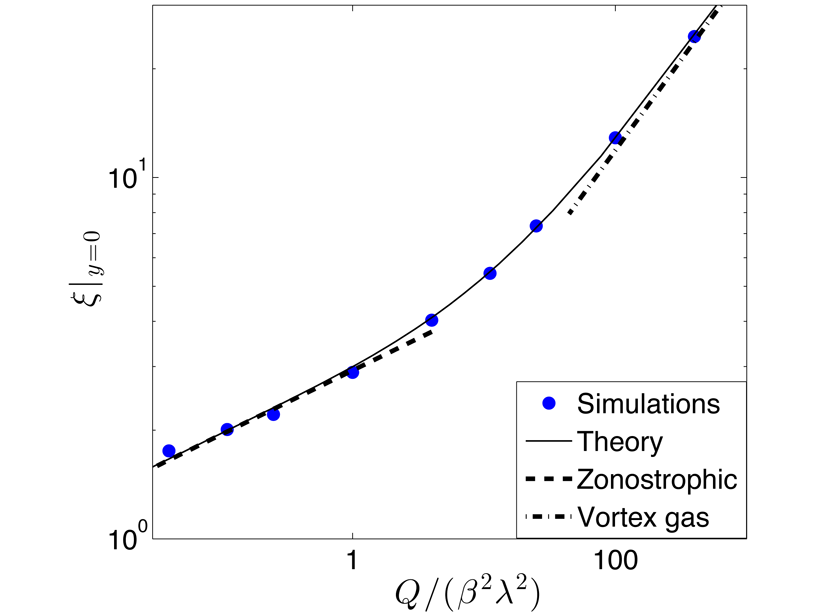Source: AGU Advances
On rotating planets, differential heating between the poles and the equator gives rise to instabilities. These are manifested as transient disturbances (e.g., Earth’s mid-latitude storms) that transport enthalpy poleward, thereby lessening the temperature gradients and quenching the instabilities. Scientists have long sought to understand how the resultant temperature gradients depend on the degree of destabilization, along with other properties of the system. Gallet & Ferrari [2021] develop a scaling law that quantifies these dependencies and shows how meridional temperature gradients respond – weakly – to changes in the forcing. Their scaling theory bounds the utility of the longstanding but ultimately incorrect hypothesis that eddies relax temperature gradients to a state of marginal stability. These new results provide a fully non-linear benchmark for numerical methods used to simulate geophysical flows, for guiding thinking as to the behavior of less idealized flows, and for inspiring aspiring theoreticians. As Vallis [2021] points out in a companion Viewpoint, extracting order from turbulence is often seen as academic hardscrabble, which makes the fertility of Gallet and Ferrari’s accomplishment all the more remarkable.
Citation: Gallet, B. & Ferrari, R. [2021]. A quantitative scaling theory for meridional heat transport in planetary atmospheres and oceans. AGU Advances, 2, e2020AV000362. https://doi.org/10.1029/2020AV000362
—Bjorn Stevens, Editor, AGU Advances
Text © 2021. The authors. CC BY-NC-ND 3.0
Except where otherwise noted, images are subject to copyright. Any reuse without express permission from the copyright owner is prohibited.

